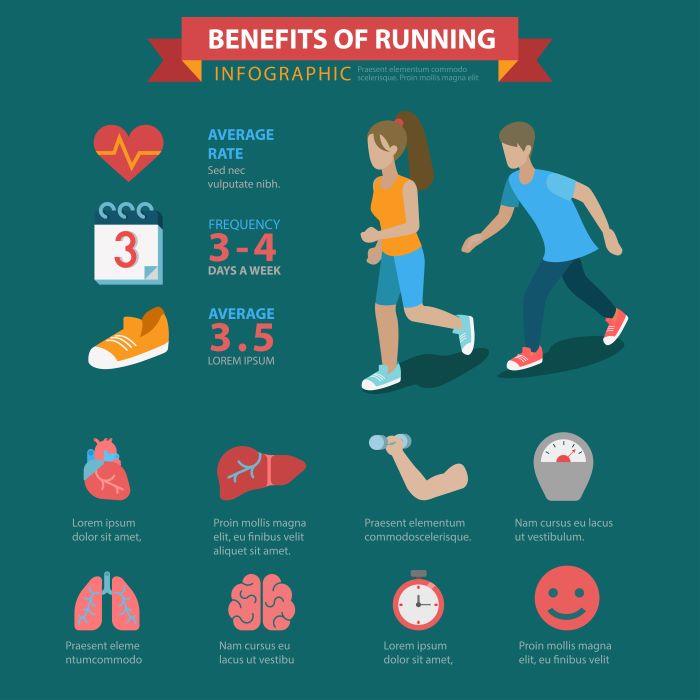When embarking on the journey of half marathon training, it’s essential to grasp the fundamentals that will guide you towards achieving your goals. A half marathon, measuring 13.1 miles, requires not just physical endurance but also mental resilience and strategic planning.
First, understanding your current fitness level is crucial. Assessing how many days a week you should run for half marathon training depends on your experience and existing running base. Here are some key points to consider:
- Beginner Runners: If you are new to running, starting with 3 to 4 days a week is advisable. This allows your body to adapt to the demands of running without risking injury.
- Intermediate Runners: For those with some running experience, 4 to 5 days a week of running can help build the endurance needed for race day.
- Advanced Runners: Experienced runners may benefit from running 5 to 6 days a week, incorporating speed work and long runs to enhance performance.
Additionally, integrating rest days is vital for recovery and injury prevention. During training, it’s also important to include cross-training activities, such as cycling or swimming, which can enhance your overall fitness while giving your running muscles a break.
For a more personalized training plan tailored to your needs, visit our website to learn more and get started today! Click here.
Determining Your Running Frequency
Determining the right running frequency for your half marathon training is a critical step in optimizing your performance. The frequency of your runs can significantly influence your endurance, speed, and overall readiness for race day.
To establish how many days a week you should run for half marathon training, consider the following factors:
- Personal Goals: Are you aiming for a specific finish time, or is your goal simply to complete the race? Your objectives will heavily influence your training schedule.
- Current Fitness Level: If you’re starting from a lower base of fitness, gradually increasing your running days is essential. Begin with 2-3 days a week and incrementally add more as your body adapts.
- Recovery Needs: Listen to your body. If you’re feeling fatigued or experiencing pain, it may be necessary to reduce your running days to allow for proper recovery. Incorporating rest days is vital to prevent overtraining.
- Type of Training: Consider your training plan. If it includes long runs, speed work, and recovery runs, your frequency may need to increase to accommodate these different workout types.
It’s also beneficial to incorporate variety into your running routine. Mixing up your routes, terrains, and paces can keep your training engaging and help you build different muscle groups.
Balancing Running and Recovery Days

Balancing running and recovery days is essential for maximizing your training effectiveness while minimizing the risk of injury. As you prepare for your half marathon, understanding how to schedule these days can make a significant difference in your performance.
When planning your weekly training routine, consider the following strategies:
- Incorporate Rest Days: Allowing your body time to recover is crucial. Typically, a good approach is to include at least one to two rest days each week, especially after long or intense workouts. These days allow your muscles to repair and strengthen.
- Active Recovery: On recovery days, engage in low-impact activities such as walking, cycling, or yoga. These activities promote blood flow and muscle recovery without the strain of running.
- Listen to Your Body: Pay attention to how you feel. If you experience fatigue or soreness, it may be wise to add an extra recovery day. This proactive approach can prevent injuries that could derail your training.
- Plan Your Long Runs Wisely: Schedule your long runs on a day when you can allow for adequate recovery afterward. For many runners, this is often a Saturday or Sunday, followed by a rest or easy day.
By effectively balancing your running and recovery days, you’ll enhance your performance and enjoyment of the training process, leading up to a successful half marathon experience.
Incorporating Cross-Training Activities

Incorporating cross-training activities into your half marathon training plan is a fantastic way to improve overall fitness while reducing the risk of injury. By engaging in different forms of exercise, you can enhance your endurance, strength, and flexibility, complementing your running regimen.
Here are several effective cross-training options to consider:
- Cycling: Whether on a stationary bike or outdoors, cycling is an excellent aerobic workout that builds leg strength without the impact associated with running. Aim for moderate to high-intensity rides to stimulate cardiovascular fitness.
- Swimming: This low-impact activity is perfect for building endurance and strength while providing a full-body workout. Swimming engages various muscle groups and helps improve lung capacity, making it ideal for recovery days.
- Strength Training: Incorporating resistance exercises into your routine can enhance your running performance by building muscle strength and improving stability. Focus on core, leg, and upper body workouts to create a well-rounded strength foundation.
- Yoga or Pilates: Both practices promote flexibility, balance, and core strength, which are crucial for runners. They also help with recovery, relaxation, and injury prevention by enhancing muscle elasticity.
When planning your training week, consider allocating one to two days for cross-training. This not only helps maintain motivation but also allows your body to recover from the repetitive nature of running while still staying active. By diversifying your workouts, you’ll be better prepared to tackle the challenges of your half marathon.
Listening to Your Body During Training

As you embark on your half marathon training journey, it is crucial to listen to your body. Recognizing the signs of fatigue, discomfort, or potential injury can significantly impact your performance and overall experience. Here are some important aspects to consider when tuning in to your body’s needs:
1. Recognize the Signs: Pay attention to how your body feels during and after each run. Common indicators of overtraining include persistent fatigue, irritability, and decreased performance. If you notice any of these signs, it might be time to adjust your training schedule.
2. Rest and Recovery: Incorporating rest days into your training plan is essential. Your body needs time to recover and repair itself after intense workouts. Listening to your body may mean taking an extra rest day if you’re feeling particularly worn out.
3. Pain vs. Discomfort: Distinguish between normal muscle soreness and pain that could indicate an injury. If you experience sharp or persistent pain, it’s wise to consult a medical professional and possibly modify your training.
4. Hydration and Nutrition: Proper hydration and nutrition play a significant role in how your body responds to training. Ensure you’re fueling your body with the right nutrients and staying hydrated to support your running efforts.
5. Adjusting Your Plan: Be flexible with your training schedule. If your body is telling you to slow down, consider adjusting your mileage or incorporating more cross-training activities. Adapting your plan can help prevent burnout and injuries.
Listening to your body is not just about avoiding pain; it’s about enhancing your overall training experience. By being attuned to your physical and mental state, you can create a sustainable half marathon training plan that promotes health and enjoyment in every step.
Creating a Personalized Half Marathon Plan

Crafting a personalized half marathon training plan is key to achieving your running goals while enjoying the journey. A tailored approach considers your current fitness level, running experience, and individual preferences. Here’s how to create a plan that suits you:
1. Assess Your Fitness Level: Before you start, evaluate your current running abilities. Are you a beginner who’s just starting, or an experienced runner looking to improve your time? Understanding where you stand will help you set realistic expectations.
2. Set Specific Goals: Define what you want to achieve. Is it simply finishing the race, or are you aiming for a specific time? Having clear objectives will guide your training and keep you motivated.
3. Choose a Training Schedule: Depending on your goals, select a training plan that typically spans 10 to 16 weeks. Most plans include a mix of easy runs, long runs, speed work, and rest days. Ensure to incorporate days for cross-training, which helps build overall strength and reduces the risk of injury.
4. Incorporate Variety: To keep your training routine engaging, mix up your workout types. Include hill workouts, tempo runs, and interval training. This not only enhances your performance but also makes your runs more enjoyable.
5. Monitor Your Progress: Keep track of your runs, noting how you feel, your pace, and any challenges. This will help you make necessary adjustments to your plan and celebrate your achievements along the way.
6. Be Flexible: Life can be unpredictable, so be prepared to adjust your plan as needed. If you miss a workout or feel fatigued, it’s okay to modify your schedule. The goal is to stay consistent while listening to your body.
Creating a personalized half marathon plan tailored to your unique needs can make all the difference in your training experience. Ready to embark on this exciting journey? Visit our website to learn more and get started today! Click here.


